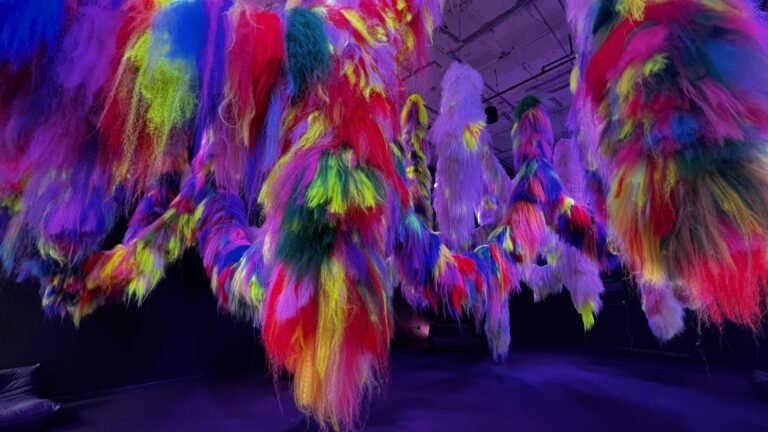This post may contain affiliate links, which means I may earn a small commission from purchased products at no additional cost to you. See my full disclosure here.
There’s something deliciously disorienting about walking through a giant simulation of the human brain—especially when it’s made entirely of neon faux hair. Icelandic contemporary artist Hrafnhildur Arnardóttir, professionally known as Shoplifter, invites you to do just that in her immersive, multi-sensory installation, Nervescape.
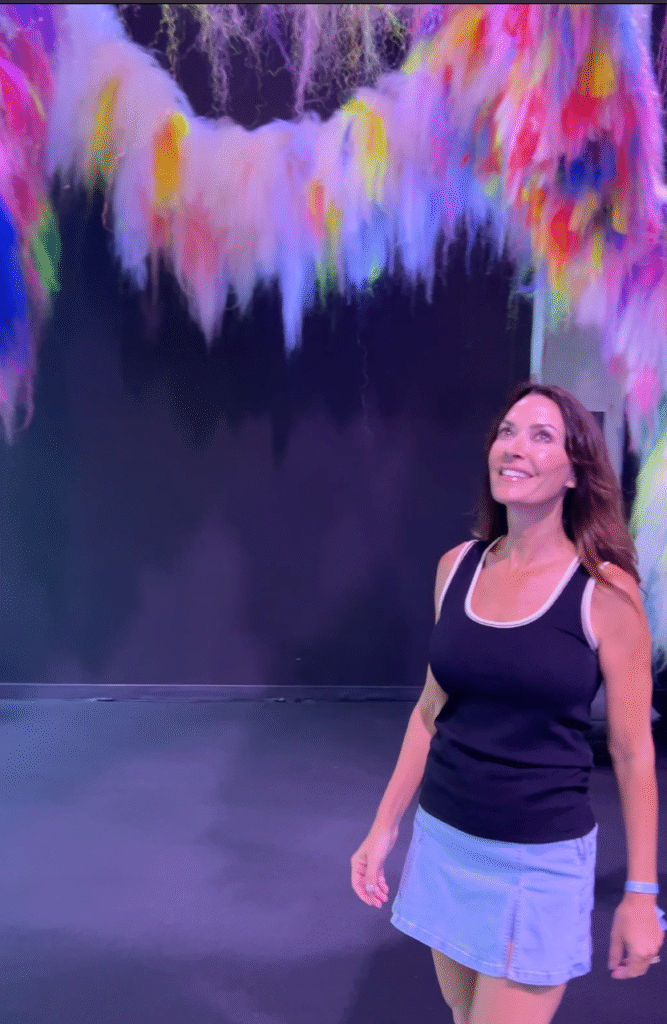
Imagine walking into a technicolor dream where neural networks come alive as sculptural bundles of synthetic hair, cascading from the ceiling in vibrant waves. You’re not just invited to look—you’re encouraged to touch, to wander, to get a little lost.
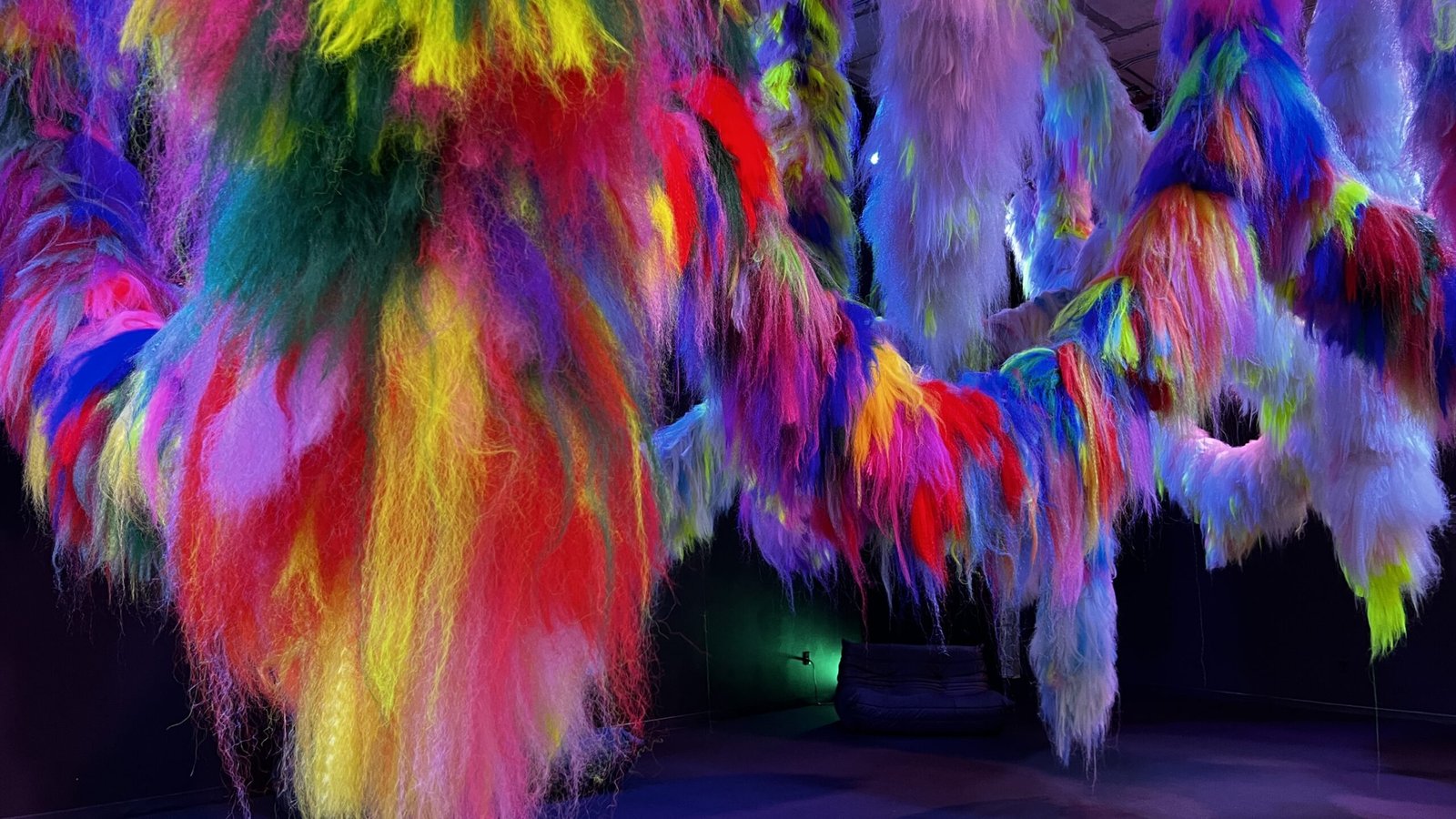
Two Cities, Two Different Experiences
I recently had the joy of experiencing Nervescape not once, but twice—first in Houston at The Art Club in POST Houston, and then again at the Hilliard Museum in Lafayette, Louisiana. Each version offered a different emotional landscape, shaped by its setting and the artist’s intentional nods to local culture.
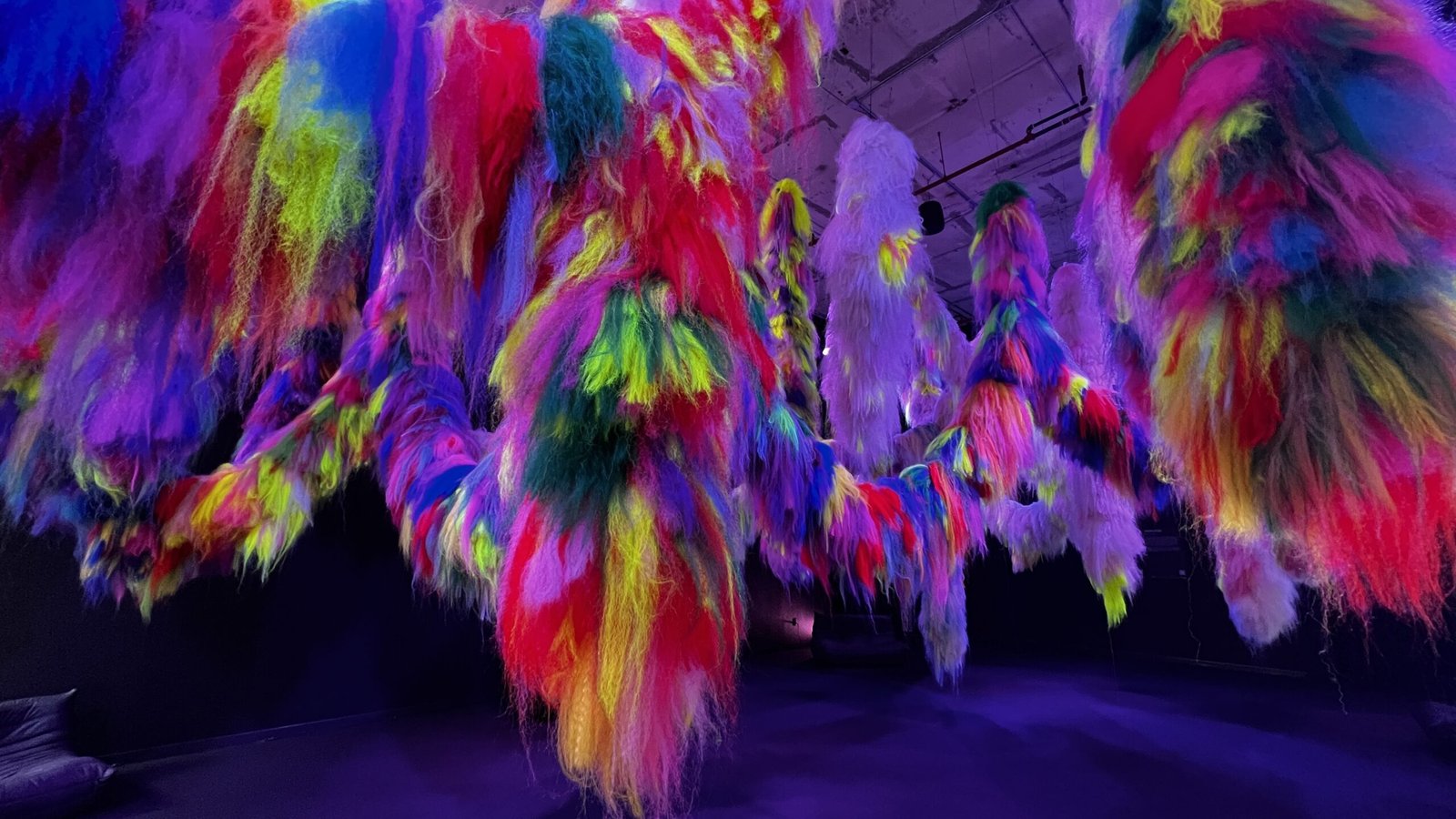
Houston: A Neon Night Sky
In Houston, Nervescape takes up residence in The Art Club, a black box-style exhibition space tucked inside POST Houston, a restored national historic landmark that’s quickly become a cultural hotspot. There, the dark walls make the neon hair installations glow like otherworldly tendrils of light. I found myself lying on the floor, gazing up in awe—as if watching the Northern Lights streak across an Icelandic sky. It was meditative, trippy, and oddly comforting.
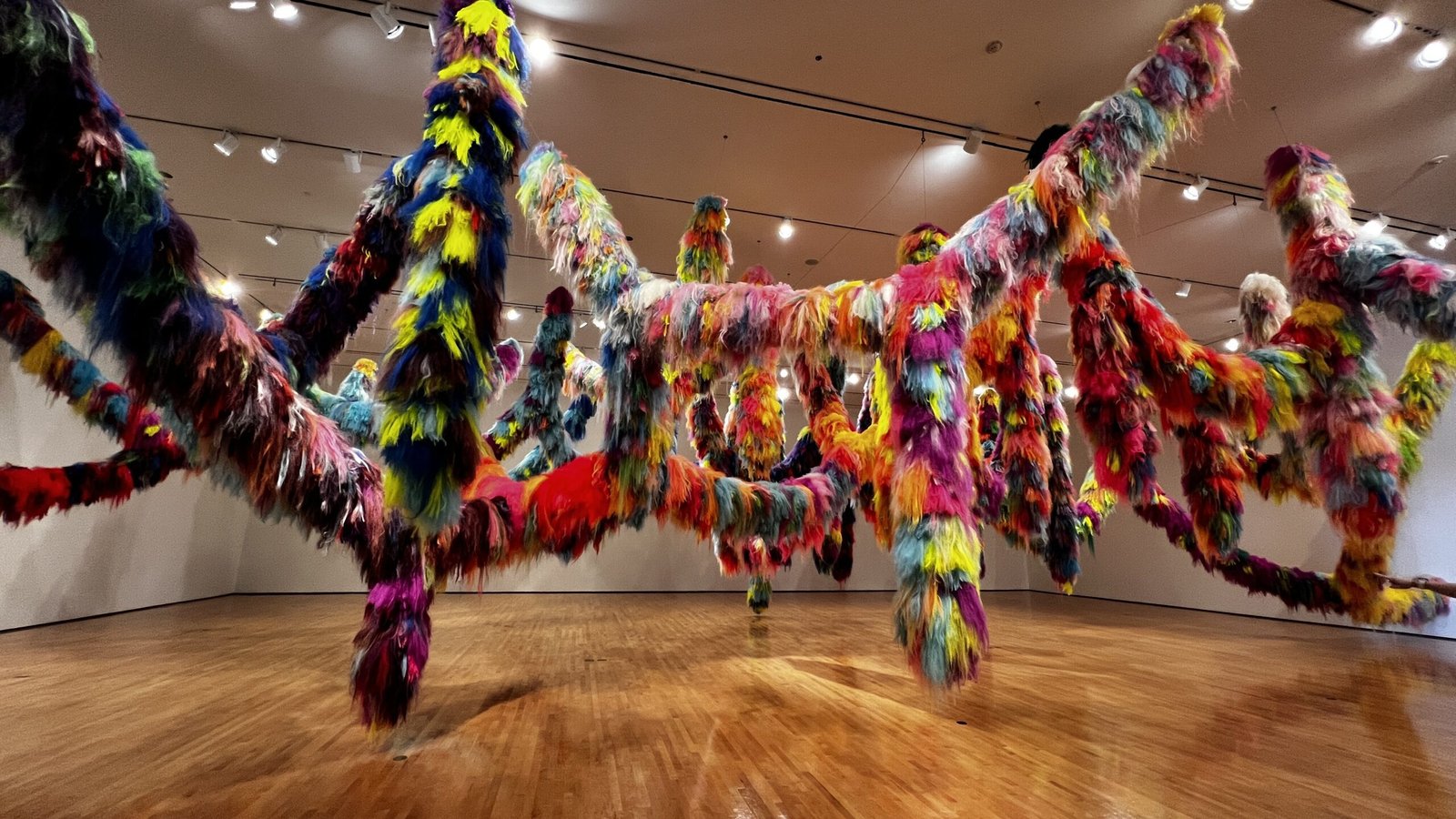
Lafayette: A Bright Daydream
Then, a few weeks later, I found myself in Lafayette at the Hilliard Art Museum, standing in the largest Nervescape installation to date—number eleven in the series. Here, the white gallery walls completely shifted the mood. The same neon-hued hair took on a cloudlike softness. It felt more like a daydream than a rave, more like cloud gazing on a bright, clear afternoon than stargazing on a Nordic night. That’s the magic of Arnardóttir’s work: it changes with you, with the space, with the light.
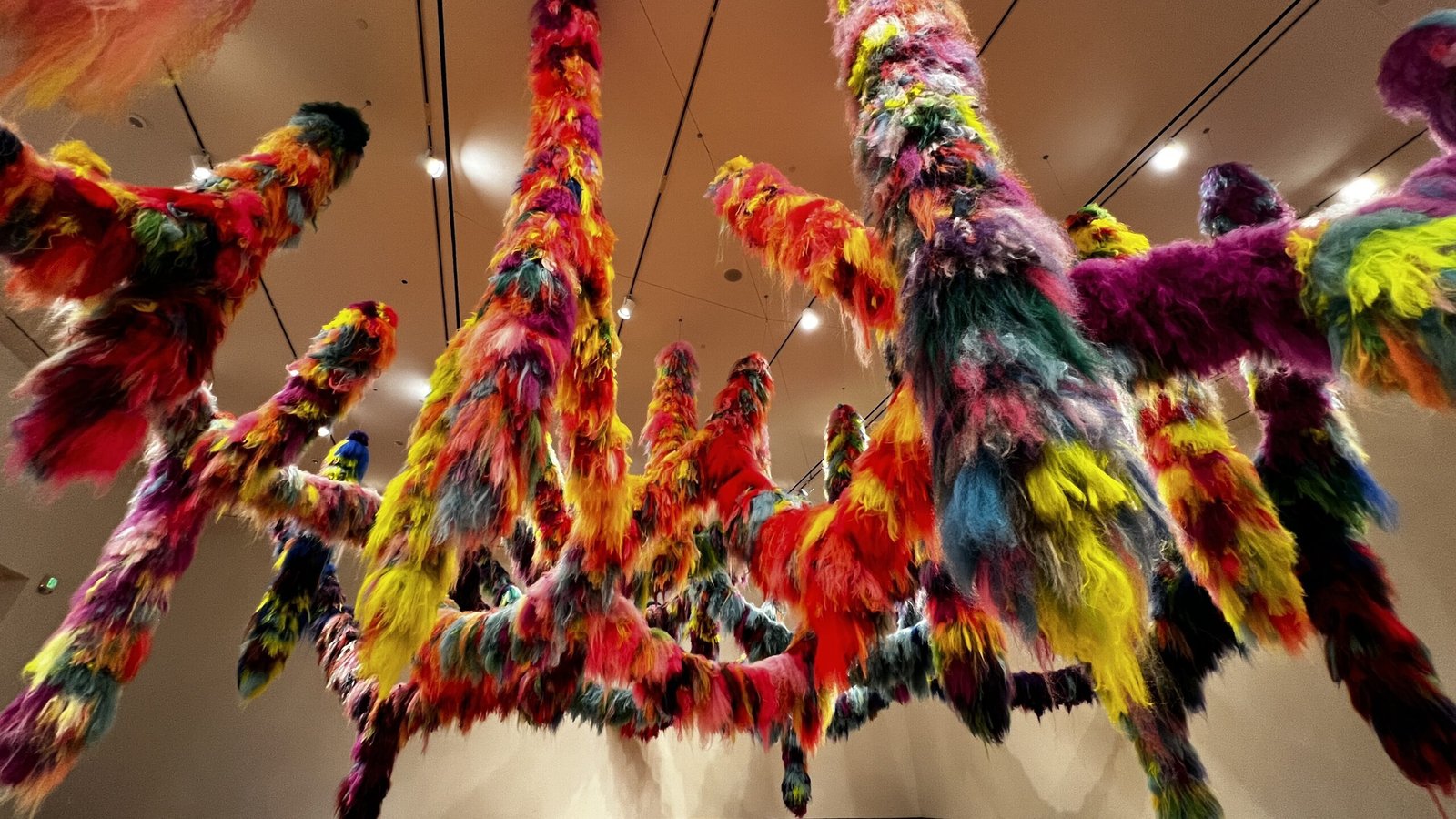
Each installation is a site-specific response to its environment. In Lafayette, Nervescape draws inspiration from Louisiana’s landscapes and cultural textures—think Spanish moss, wetlands, and the tangled beauty of the swamps. Arnardóttir spent two and a half weeks in residence, working alongside museum staff and local students to bring her vision to life. That hands-on collaboration is part of what makes the work feel so alive, so rooted in the communities that host it.
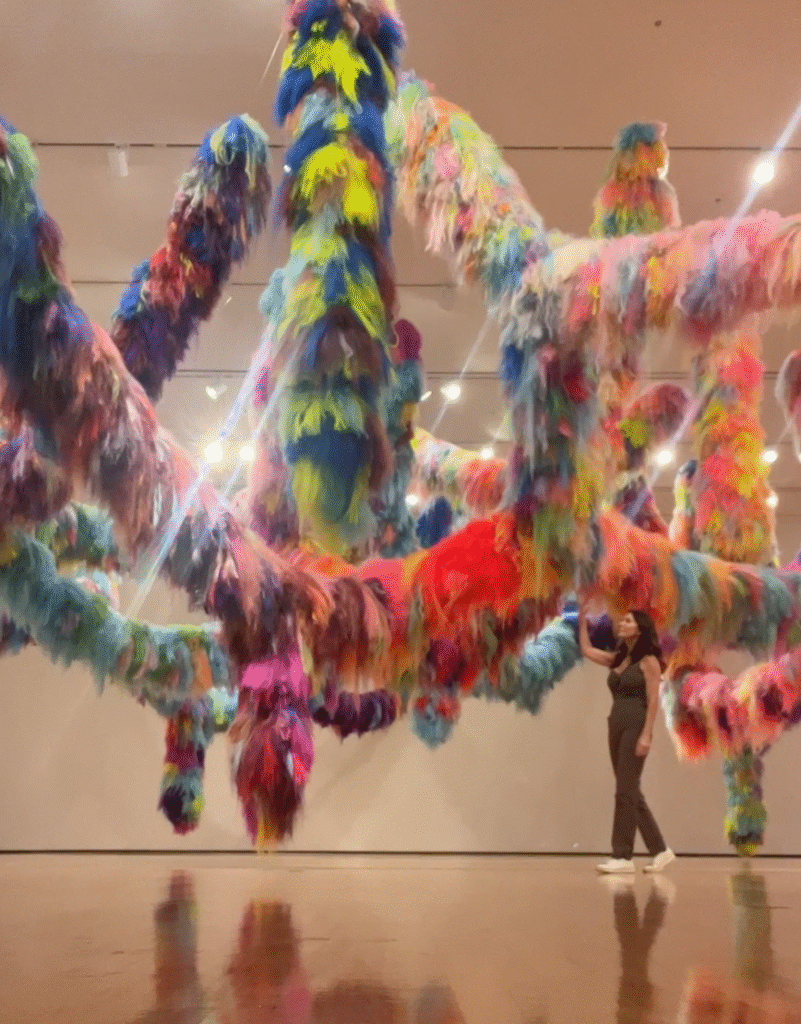
The Meaning Behind the Material
Hair is the thread—quite literally—that ties Arnardóttir’s artistic world together. Her fascination with it began in childhood, captivated by her grandmother’s braid, which was kept like a relic in a vanity drawer. Hair, throughout history, has been used as both a symbol and a material—woven into mourning jewelry, keepsakes, and tokens of memory. In Nervescape, she spins that tradition into a futuristic, sensory playground.
The artist sources mountains of synthetic hair, which museum assistants unbox and bundle into “fathoms”—a measurement used for depth at sea. In Icelandic, the word for fathom also means “hug,” which feels perfectly fitting. Walking through Nervescape is a bit like being wrapped in a giant, neon hug. It’s soft, surreal, and wholly absorbing.
And in case you’re wondering, yes—her nickname “Shoplifter” has a story. While studying for her MFA in New York, someone mispronounced her last name, and she ran with it. It’s cheeky, memorable, and oddly fitting for an artist who reclaims and repurposes the familiar into something strange and beautiful.
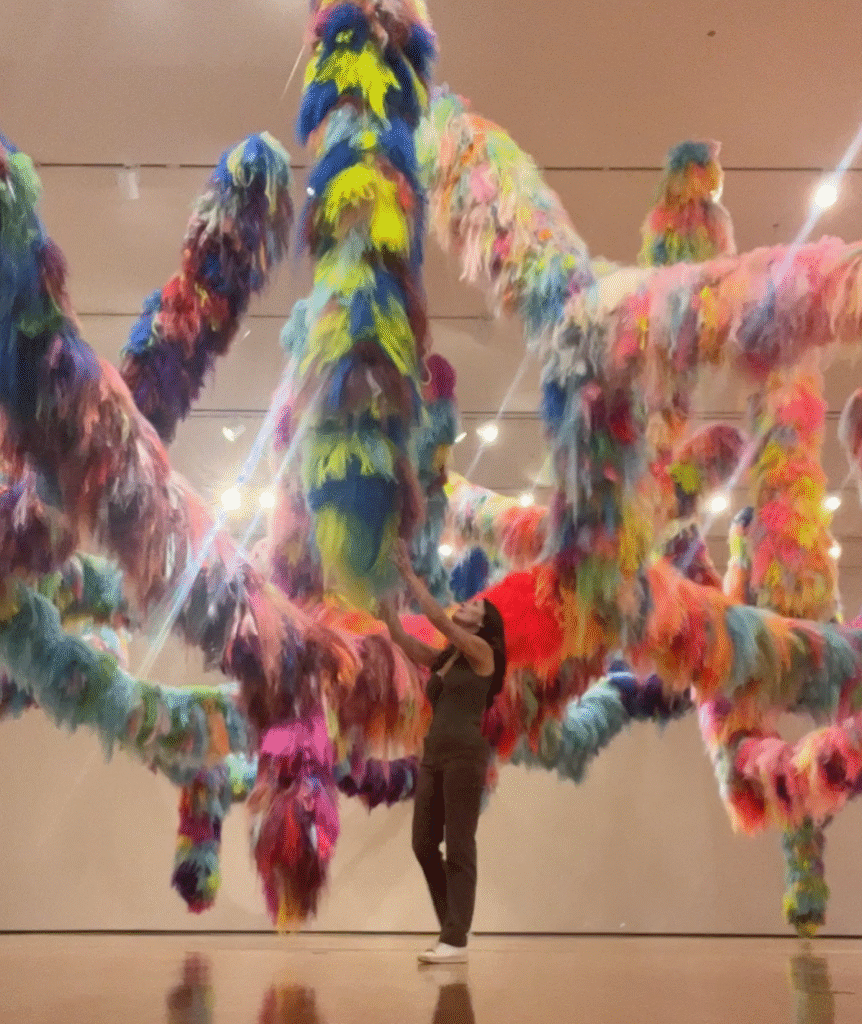
Art You Can Feel
What I love most about Nervescape—aside from its sheer visual delight—is that it’s not a “look but don’t touch” kind of art. It’s tactile, participatory, and playfully serious. You can walk through it, pose with it, get tangled in it a little. It’s meant to be felt with your whole body, not just observed from a respectful distance. That breaks down the usual museum stiffness and invites a kind of wonder that’s often reserved for children or dreamers.
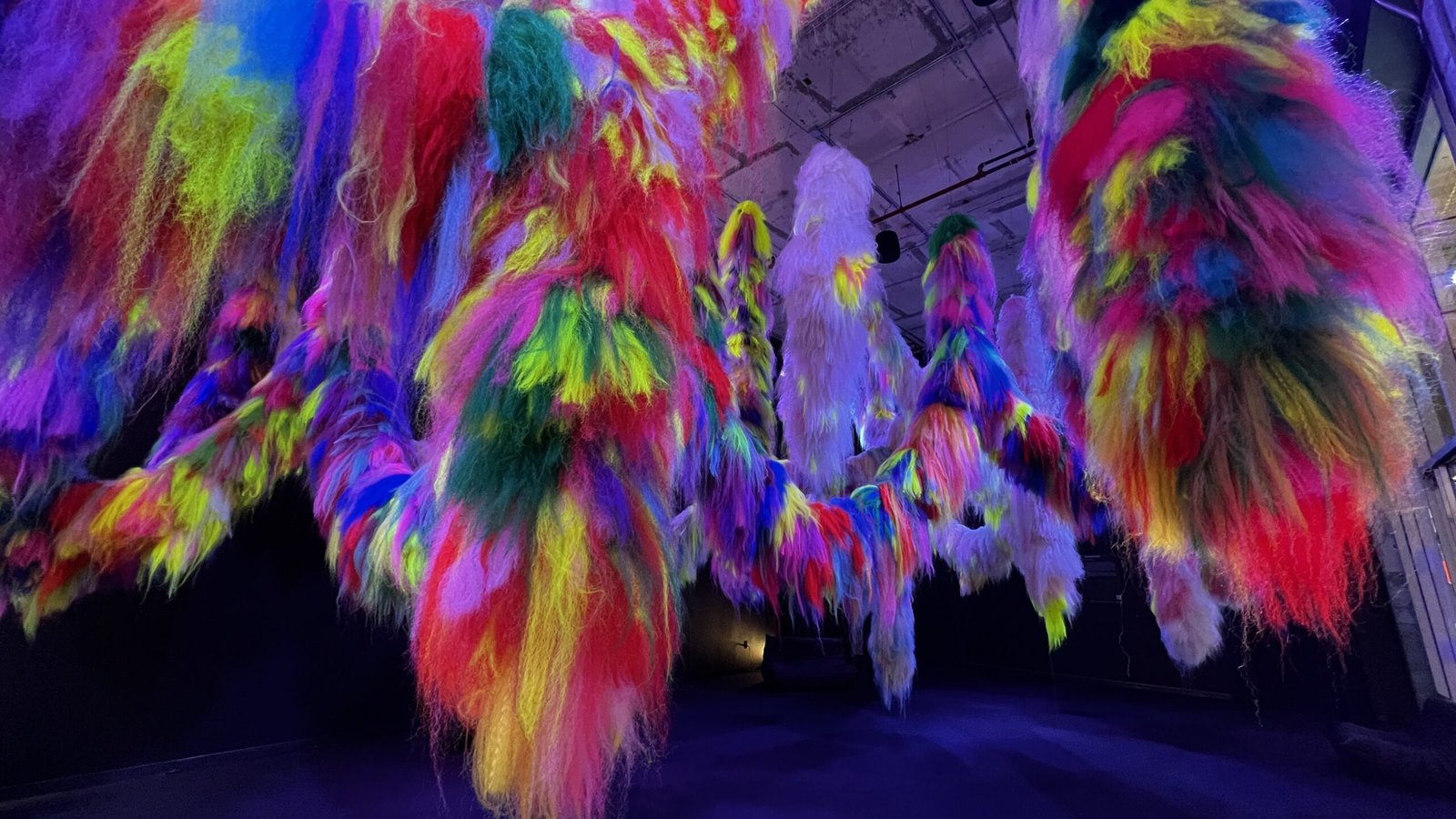
For art lovers and curious travelers wandering through the South, there are still two chances to catch Nervescape. The Houston and Lafayette installations are perfect stops for anyone craving a hit of color, creativity, and conceptual depth. Whether you’re drawn by the neuroscientific inspiration, the cultural textures, or just the sheer joy of walking through a rainbow jungle made of fake hair, you’ll leave with something buzzing in your brain—and maybe a few neon strands clinging to your clothes.
It’s not every day you get to step inside someone’s artistic interpretation of the human mind, let alone one so vibrant, so fuzzy, and so full of heart.
Experience Your Destination with Plannin
Travel is more than sightseeing—it’s about immersion. With Plannin, you can:

✅ Discover authentic adventures, culture, history & cuisine
✅ Unlock hotel deals worldwide at exclusive rates
✅ Book everything in one place—fast and hassle-free
Turn your next trip into a story worth sharing.
Plan your journey with Plannin today.
Stay Connected Anywhere with Saily eSIM
Traveling soon? Skip the hassle of buying local SIM cards and enjoy instant connectivity with Saily eSIM.
With Saily, you can:
- Activate mobile data in minutes—no physical SIM needed.
- Choose affordable plans in over 150 countries.
- Keep your WhatsApp, contacts, and number without switching.

Whether you’re exploring cities or remote getaways, Saily makes staying online easy and affordable.
Get your Saily eSIM now and travel worry-free.
Read More:
Houston’s Art Scene Welcomes Untitled Art: A New Contemporary Art Fair
The Design Lover’s Guide to Houston: Art, Food, Shopping & Creative Stays
Foodie Forays in Houston: Savoring the Culinary Culture of the Bayou City









